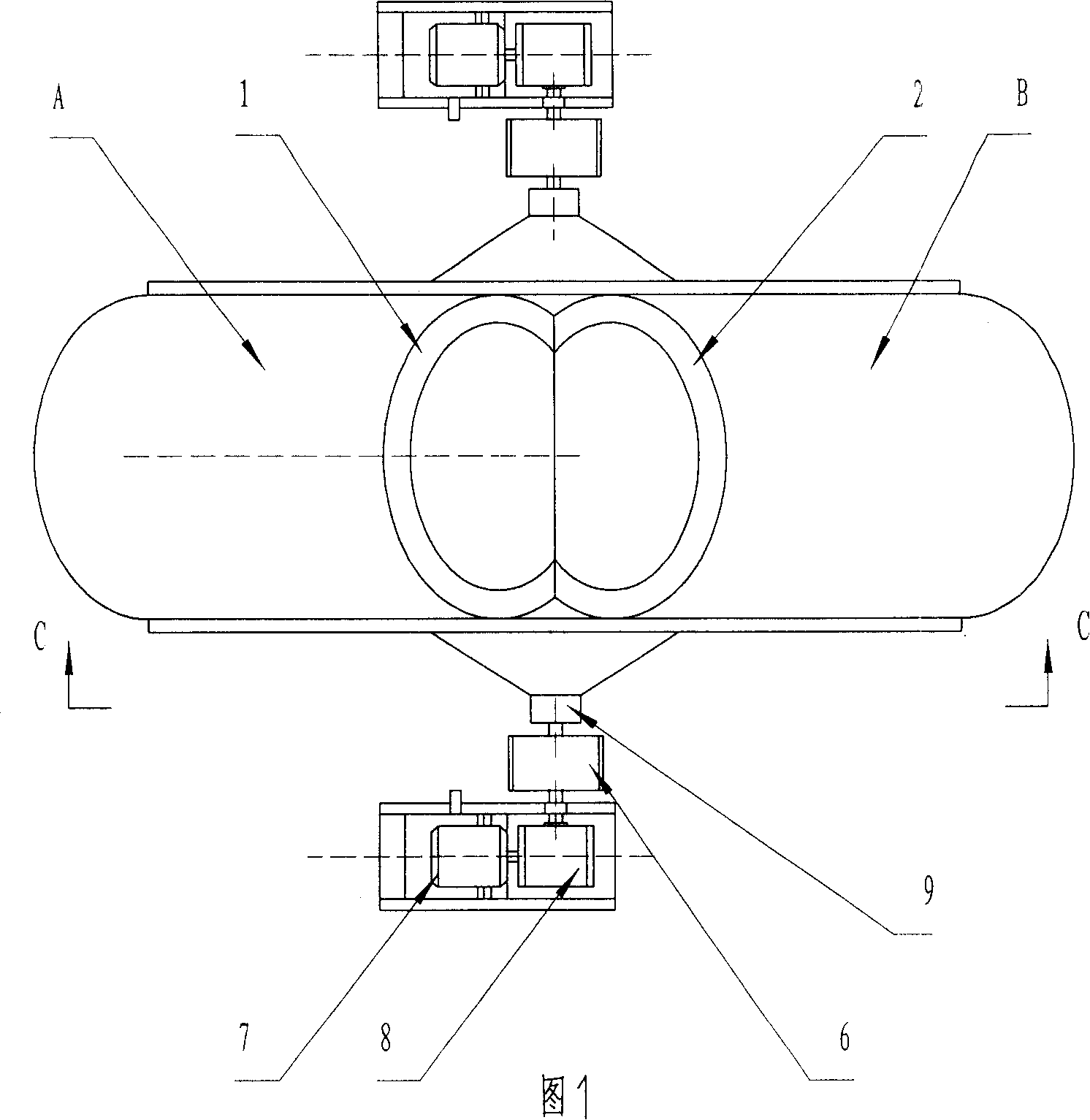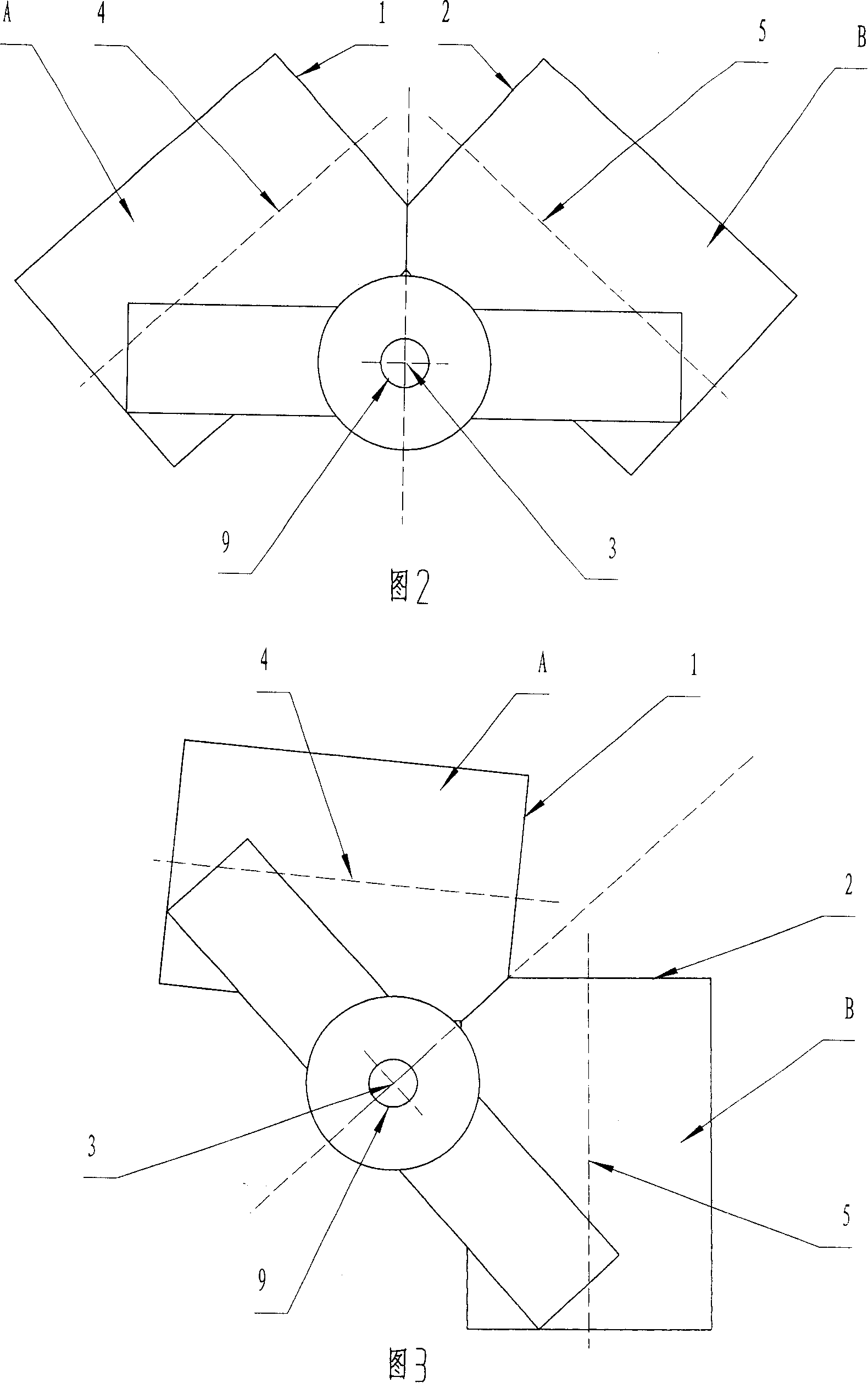Heat-exchanging ladle-to-ladle method for producing low-carbon, micro-carbon iron alloy
A ferroalloy and wrapping technology, which is applied in the field of hot swapping and wrapping, can solve the problems of large investment in fixed assets, insufficient reaction of raw materials, poor safety, etc., achieve smooth discharge and wrapping process, save turnover operation time, shorten Effect of Backpacking Time
- Summary
- Abstract
- Description
- Claims
- Application Information
AI Technical Summary
Problems solved by technology
Method used
Image
Examples
Embodiment Construction
[0030] In the present embodiment, the method for producing low-carbon, micro-carbon ferroalloys is carried out in the following manner:
[0031] ①. Connect the openings of the heat conversion reaction bag A and the heat conversion reaction bag B with two open tops for the heat conversion reaction to form a one-piece bag, as shown in Figures 1-3. When forming the conjoined package, the angle between the planes where the top open edges of the two heat conversion reaction packages A and B are located is 80 degrees. It should be noted that, in this embodiment, the open end surfaces 1 and 2 of the tops of the two heat exchange reaction chambers A and B constitute the above-mentioned planes respectively. In addition, the conjoined bag composed of the two heat exchange reaction bags A and B has a rotation axis 3, which is located at the angle between the axis lines 4 and 5 of the two heat exchange reaction bags A and B. bisector. Here, a one-piece bag drive mechanism is provided to...
PUM
 Login to View More
Login to View More Abstract
Description
Claims
Application Information
 Login to View More
Login to View More - R&D
- Intellectual Property
- Life Sciences
- Materials
- Tech Scout
- Unparalleled Data Quality
- Higher Quality Content
- 60% Fewer Hallucinations
Browse by: Latest US Patents, China's latest patents, Technical Efficacy Thesaurus, Application Domain, Technology Topic, Popular Technical Reports.
© 2025 PatSnap. All rights reserved.Legal|Privacy policy|Modern Slavery Act Transparency Statement|Sitemap|About US| Contact US: help@patsnap.com


